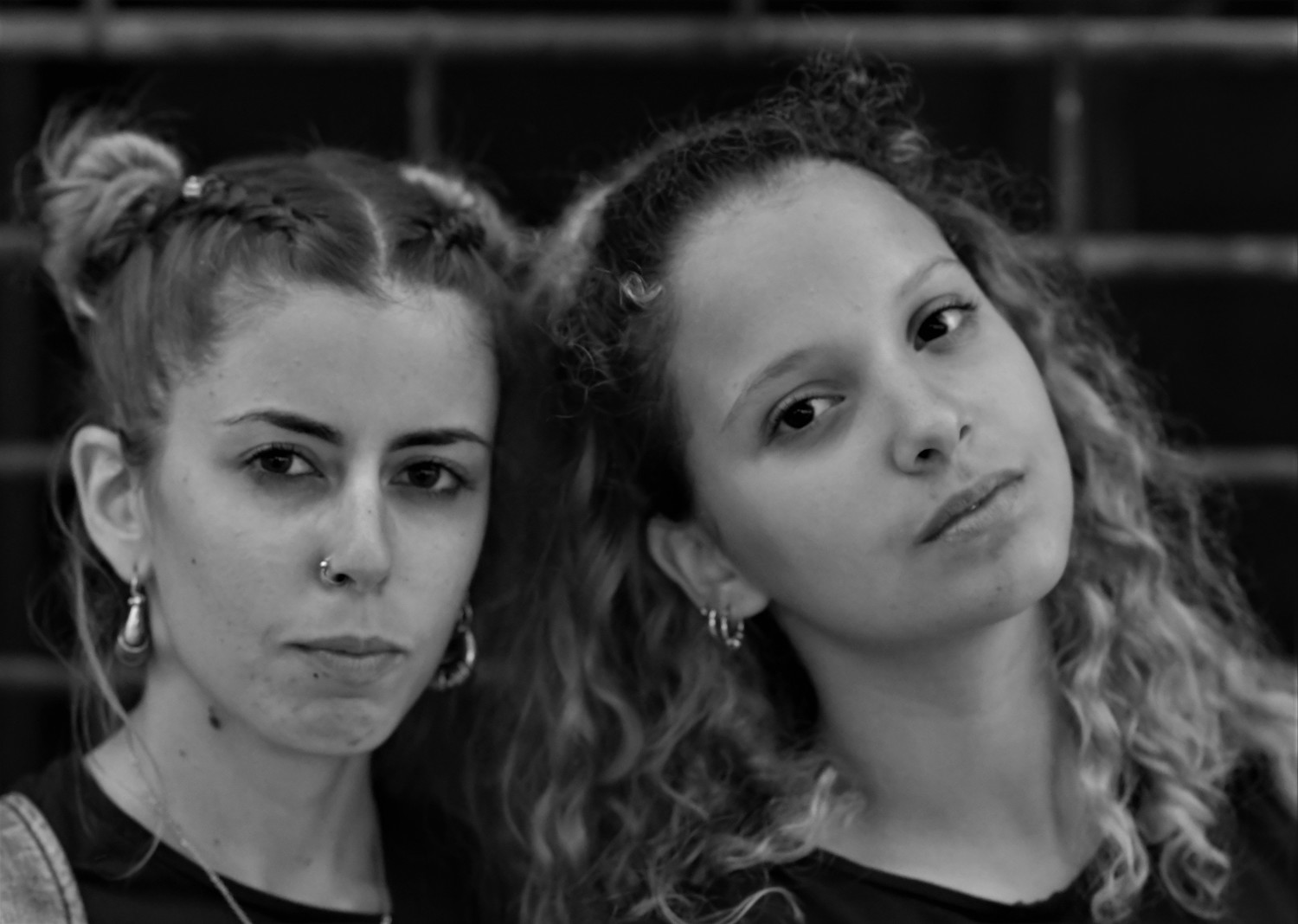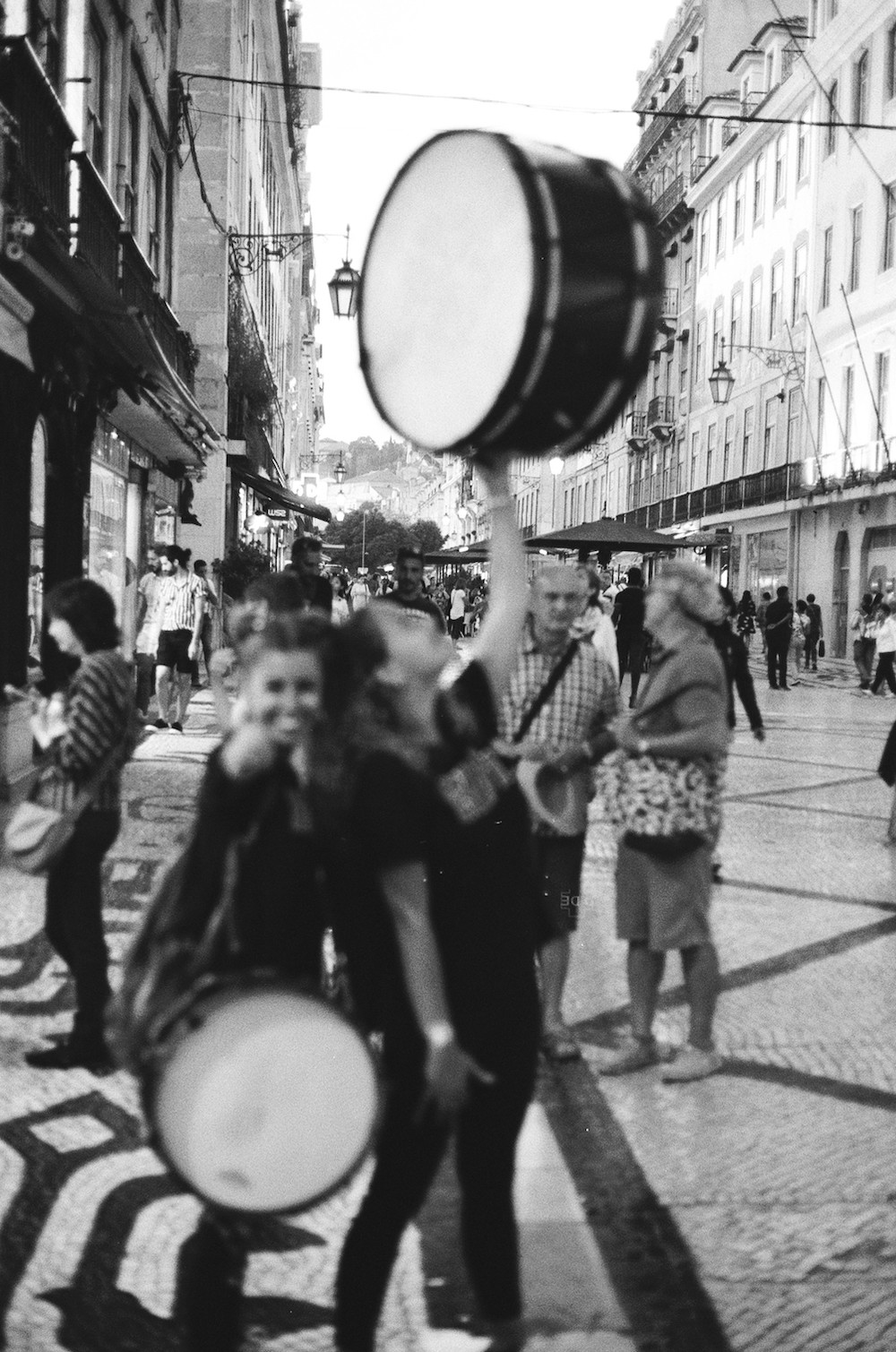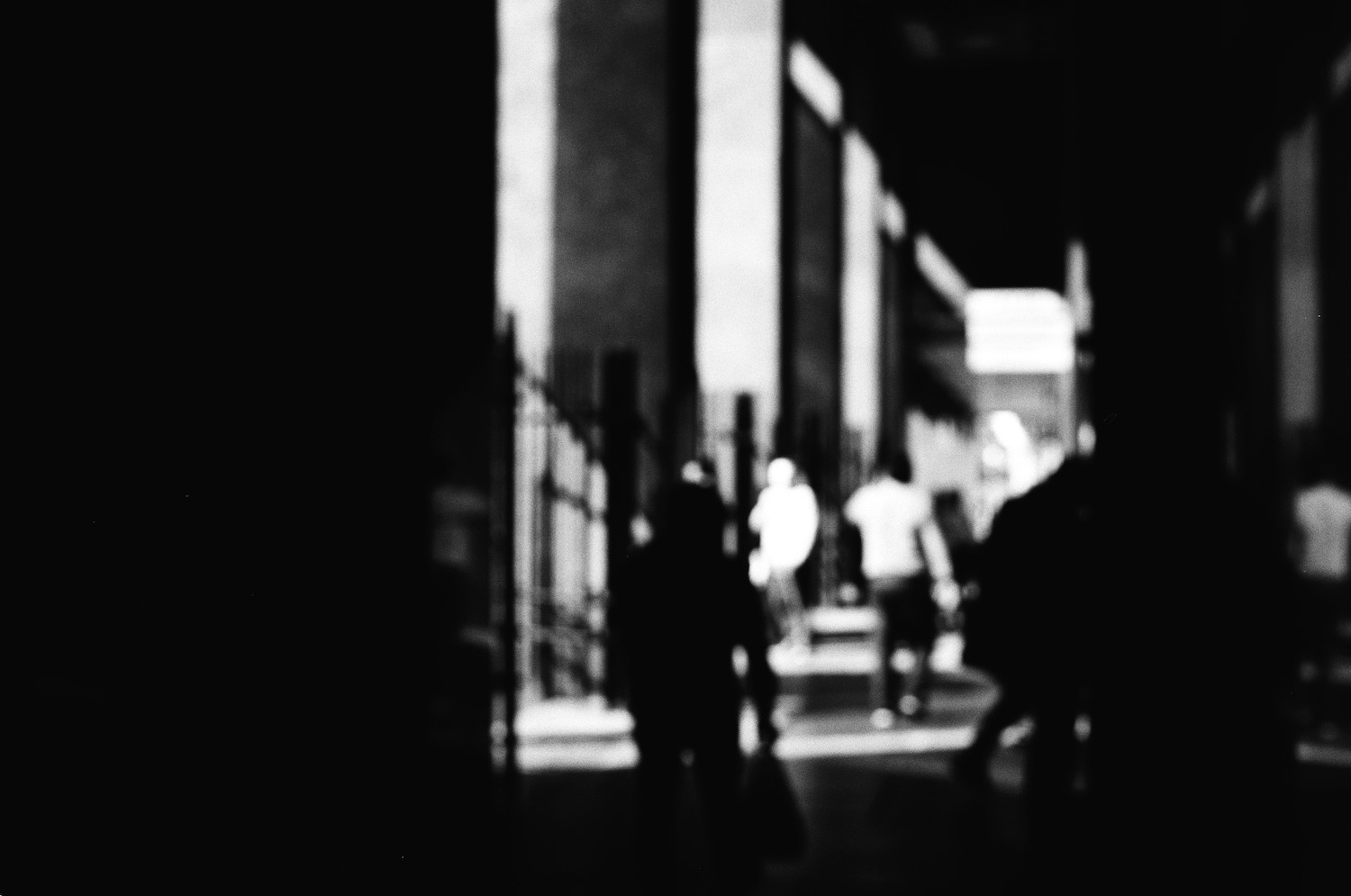Cultivating the Photographic Eye – Pictures That Tell Stories is a column exploring the divine in so-called humanist photography from the street to sacred. Photography gives us the ability to see God’s craftsmanship in a clear and insightful way, and that’s what we aim to pursue here. We’ll combine images with the written word to focus primarily on stories and themes that give us a glimpse into the tapestry of God’s creation that would be too expansive for us to see in one setting otherwise.
![]()
The light was fading fast on Lisbon’s western skyline.
Every joint and muscle from my lower back down ached from tramping the city’s hills and narrow streets. I had dressed for more pleasant weather, but the Spring day turned unseasonably warm. Now with twilight approaching, I was desperate for something cool to drink and a place to rest.
But this was my last day in Lisbon, and I had one exposure left to shoot on a roll of Ilford black and white film. And to quote a snippet from one of America’s best-known poets, Robert Frost, I had many “miles to go before” I could get it developed. No matter how weary and cotton mouthed I felt, I wanted to make this last shot count before I headed to the airport the following morning.
I stretched my back, took a deep breath, and headed towards the popular Rua Augusta fairway linking Rossio and Praça do Comércio. One shot. That’s all I needed. And to my delight, the street was teeming with pedestrians and tourists. Storefront neon flickered on as black vested waiters squeezed diners in like sardines in the city’s already cramped outdoor cafes.
The “fantastic plastic” camera cradled in my hand cost me a mere twenty-five dollars in an online marketplace. I bought it solely for the convenience of this brief work trip. I wanted something simple and light with autofocus. The camera was a bargain despite the resurgence of film photography.
Behind me the hint of cooler air skimmed the surface of the sun-blasted Tagus River. With a sudden convection-like force, a breeze rose in crescendo, and then with surprising momentum, it intensified into a rushing wind, sweeping across cobblestones, and the finely wrought mosaics decorating the pavement.
Bits of trash and debris danced midair in Rua Augusta, spinning like Turkish dervishes between the footsteps of pedestrians and mercantile illumination. In that windswept, diminishing light, I saw my coveted final shot.
Two young girls, after a stifling day of busking, were making their way down the street. A snare drum hung loosely on one of the girl’s shoulders. The other toted a cumbersome bass drum. I marshalled what strength I could and double stepped to catch up with them. The mobile rhythm section stopped when I tapped one of the girls on the shoulder.

My Portuguese has grown rusty over the years, but I explained that I wanted to use my very last shot in the camera for a picture of the two. They acceded and introduced themselves as Jessica and Inês. They could not have been more than nineteen.
The drummer girls struck a pose for me in the waning light – Inês pointing her drumstick towards me like a magician’s wand while Jessica lifted the bass drum high over her head in a posture of defiance and celebration.
I hit the shutter button, and with the final exposure finished, the camera whined as its internal mechanism rewound the film back into its canister. The roll ended with a plasticky click, and what I believed would be the best of the thirty-six shots on the roll. I expressed my gratitude for the duo indulging me. I fired off a couple more portraits of the girls with my digital camera for good measure.
Three days – and 4,788 miles later back in the States, I got the roll of film back from my developer. Every picture came out back sharp and in focus. Well … all of them, except for one. The very last shot was a hot mess.
The camera, bewitched by the distant light bouncing off fine-grained architectural stone, focused on the background, and not the two drummer girls. Jessica and Inês were completely out of focus. The musical pair was covered by a pall of heavy grain. What I had hoped would be one of my greatest shots ever, turned out to a face-palm worthy goof.
Disappointed does not sum up how I felt. I spent a week kicking myself for an amateur foul up: I had relied solely on autofocus in fast shifting light, instead of metering properly. The picture came out horribly because of it.
But the more I looked at the photo, little by little, I began to see elements of artifice in the otherwise out-of-focus image. My eyes were constantly drawn to the dreamlike chiaroscuro of the grain, and the faint smiles of two young Portuguese girls indulging the whims of a foreigner on a twilight street in faraway Lisbon.

Film is back in fashion, particularly among younger photographers. Despite these prevailing winds, I’m not one to argue that the 35mm format is more authentic than digital photography. That argument is rubbish, and I use both.
And to be fair, there’s plenty of downside to using film. It is costly, and when flying, carrying rolls of Kodak and Ilford through airport security entails overcrowded queues and hand checks. I cannot count the number of times I’ve stood like a penitent in front of a TSA official swabbing my rolls of film for illicit or dangerous materials.
Yet I am drawn to the finite nature of film. Of being bracketed in by the limitation of 24 to 36 shots on a roll. Beyond the nostalgia factor of using the 35mm format, film also helps me focus on the moment in a tech driven world of online streaming, downloads, forgotten passwords and ultimately, convenience.
Film helps me take a “holy breath” of pause and appreciation amid the scientific magic of light and chemical emulsions. That’s something that has spilled over into my digital work, writing, and even my family life.
And just as important, the odd imperfection in the roll of film, in turn, has helped me to see more subtle contours of grace. Because grace is something I have struggled with for decades.
Much like that photo of Jessica and Inês, or any number of photographic blunders, I have come to see there can be beauty in imperfection. These far from picture perfect shots are the ones I sometimes hold closest to my heart.


![]()
Tommy Darin Liskey was born in Missouri but spent nearly a decade working as a journalist in Venezuela, Argentina and Brazil. He is a graduate of the University of Southern Mississippi. His poetry, fiction and non-fiction has appeared in The Red Truck Review, Deep South, Driftwood Press, Biostories, Spelk, Heartwood among others. His narrative and documentary photography has been published in The Museum of Americana, Change 7, The Blue Mountain Review, Cowboy Jamboree, Literary Life and Midwestern Gothic, among others. He lives in Texas with his family.
“I take a more documentary approach to photography, using the camera to explore faith in images, and hopefully, the human story, through unplanned street portraits of people I meet in my both my travels, and everyday life. As both a writer and photographer, I believe my calling is to be present. I pray that God choreographs the rest.”
Leave a Reply
A Field Guide to Cultivating ~ Essentials to Cultivating a Whole Life, Rooted in Christ, and Flourishing in Fellowship
Enjoy our gift to you as our Welcome to Cultivating! Discover the purpose of The Cultivating Project, and how you might find a "What, you too?" experience here with this fellowship of makers!

Add a comment
0 Comments